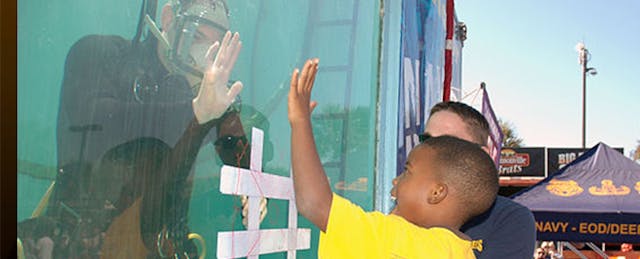When seeking to incorporate technology with traditional teaching methods, the idea sounds optimal at first. In fact, here in Detroit, the Educational Achievement Authority (EAA) of Michigan and its set of schools have set the standard for using a blended curriculum in order to “raise the bar” at lower-performing schools within city limits.
However, there’s a problem. Students can become easily discouraged when they are unfamiliar with using technology, and instructors can become overwhelmed when trying to teach content along with basic computer skills. As educators, we must do what we can in order to prepare our students for success not only within the classroom, but also in the outside world--especially as we make advancements towards being a more technologically-dependent society.
The use of technological advancements often comes with challenges, especially when trying to establish its use amongst a population of students who have had limited exposure to it. These EAA schools are frequently housed within impoverished areas of Detroit, and the students are often novices when it comes to computer use.
Usually, when people think of pairing technology with kids, the assumption is that it will be seamless. How many times have your own children been “called to duty” to program the DVR or give you a tutorial on how to use your smartphone?
But when students are expected to use technology that includes practical applications such as word processing software and spreadsheets, it can pose a challenge both to them and to the instructor.
As I’ve seen in my teaching practice, building genuine relationships with students is one of the most efficient ways to establish classroom management, but it is also necessary to engage students in learning the skills they need in order to use the technological components of the classroom. So, here are my recommended practices for building those relationships.
1. Acknowledge resistance to a student-teacher relationship, but don’t accept defeat
When I first began teaching with the EAA, I had a student explicitly tell me that she was not interested in developing a relationship with me; she just wanted to learn and wanted me to teach.
I acknowledged her request and agreed that I would keep the nature of our relationship “strictly business”.
After working with this same student using one-on-one instruction for both troubleshooting and individual assignments, our relationship changed. She now stops by my classroom daily to say good morning and give me a hug.
2. Persistent patience will pay off
I also recognize that I must exude patience when attempting to assist students to understand how to use both technological software and hardware.
Now, patience is not my strong suit when it comes to teaching basic computer skills. (Just ask my 60-year-old mother.) However, students can become easily frustrated and want to give up--especially when they struggle with sending an attachment, but see their peers navigating through assignments with ease.
My advice? Begin by acknowledging your students’ needs--allow them to know that you understand their frustration and that you will work with them to accommodate your students accordingly until they are secure in venturing out on their own.
Also, learning how to troubleshoot hardware can quickly become a lesson in itself, especially when students are inexperienced with common computer malfunctions. Taking time to acclimate the class to probable glitches by giving a “Just In Case” tutorial will certainly decrease the amount of time dedicated to doing so in the middle of a lesson. Better yet, the student will soon develop the autonomy to resolve these issues on their own.
3. Show your human side
Show your students your personality. For example, I allow my students to submit their assignments to me via an email account that was established solely for this purpose. My avatar is a silly picture of me, but this allows students to see that I am a human and it softens the ground between them and myself to cultivate their learning.
Another strategic method of showing students who you are is by playing music. Music can and will set the climate within your classroom, especially when it is playing as they enter. I like to use instrumentals of popular songs for this purpose. Students are usually surprised that I am aware of the songs that they like and this allows me to connect with them without worrying about explicit or suggestive lyrics. I even occasionally accept requests for special occasions such as birthdays or as a reward for meeting expectations.
The benefits of technology within the classroom far outweigh the minor and infrequent gaffes that accompany any method of learning. By building relationships and using technology to provide prompt and consistent feedback with students, teachers are able to familiarize themselves with students strengths and areas in need of improvement and foster their academics from there.
I encourage educators to try using a blended curriculum, regardless of demographic influences, in order to assist students in becoming successful 21st century learners. I also implore those who currently use technology to continue implementing these strategies that allow the students to manage their own learning so that you can eventually obtain the distinction of becoming the facilitator and coach in your classroom.


